The Negishi Racecourse Grandstand in Yokohama looms like an ancient 3-headed Titan over the Negishi Plateau. It once drew crowds of thousands to cheer the racing horses from its elaborate bleachers, to wander its long hallways and admire its extravagant architecture, but that was over 80 years ago, before it was surrendered to the US military after World War Two. Now its racecourse is a floodlit naval base, its bleachers are fenced off and overgrown with ivy, its innards rest silent and dark but for the steady drip of rain-water leaking through its rotting concrete skin.
The Negishi Grandstand was built by the prolific American architect J.H. Morgan, who also designed churches, movie theaters, homes, and office towers around Yokohama and other Japanese cities. It stands an order of magnitude older and more interesting architecturally than any other haikyo I’ve explored in Japan so far, though it was also far more central and more difficult to gain access to. I arrived with my friend Mike at around 11pm, armed with googlemaps and gear for sleeping over. I thought we were well-prepared, but upon arrival we were shocked at how bright and proximal the Navy Base was, how tall the plate metal fence was, and how frequent the parade of passersby was. We umm-ed and ahh-ed for a long time, waiting for the surrounding park to clear of dog-walkers and kissing couples (until past 1am), then for the sailors on base to clear away from the entrance to their bar (past 2am). We made a few forays over the exterior fence, and finally I went over the interior plate metal fence. It stood about 8 feet high, too high to jump and grab the lip of, but happily there was a pipe nearby I could brace against and work my way up. Getting Mike over the fence was a little troublesome, but as a team we got him up and over. We left our bags with all our camping gear down by the fence, realizing there was no way we would sleep there then try to leave in full daylight. On the other side of the fence the bleachers were a jungle, completely overgrown with creepers and bushes and tangled vines. We pushed through, checking every potential entrance to the grandstand complex, but they were all boarded up securely but for the final one, which had had a hole smashed into it. It was almost completely black inside, but for a few shreds of orange base floodlight filtering through the chinks in the boarding covering all windows and doors. This meant only flash photography, which means some sterile photos. Also, the whole place had been gutted a long time ago, so almost all furniture was missing, leaving us with a lot of empty rooms and long empty hallways. Both Mike and I took video, it’s very dark, but it gives a good feel for the place. Here it is:
And here are the best of the photos:
This was the most interesting room, with some color on the walls, some furniture, and some weird scribbles:
This room had a lot of sinks:
We ascended to the top of the middle tower, the 8th floor, and took some night shots- this is looking back to Yokohama:
That’s the west tower.
And the east. After taking multiple shots from the roof, the dawn started to break through the cloudy skies, it was around 4:30am, and we decided to hurry down and out. We came down different stairs than we went up, got ourselves turned around, but finally came to a newly built exit that we’d seen from the outside, but that had been locked. We turned the lock and exited out into the dawn air, completely by-passing the plate-metal fence climb-down neither of us had been looking forward to. And then we were out! I took pictures of the grandstand’s exterior.
This is the pipe and metal fence we had to negotiate to gain entry. You can see how overgrown it is:
2 exhausted explorers, feeling like we’d been out all night in a night-club, ready to go home.
As a haikyo, this place was good for its age and the sense of history upon it, but being completely gutted on the inside and so difficult to gain daylight entry to made it less than I’d hoped for. Here’s a gallery of all the photos:
FACTFILE
Location– Yokohama. Entry – Difficult, over several fences. Highlights– Waiting all night for the coast to be supremely clear, the darkness inside, owning the place from the roof.
RUINS / HAIKYO
You can see all MJG’s Ruins / Haikyo explorations here:
[album id=4 template=compact]

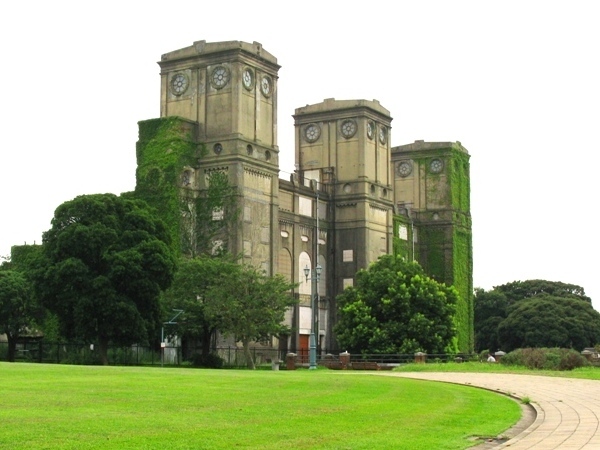
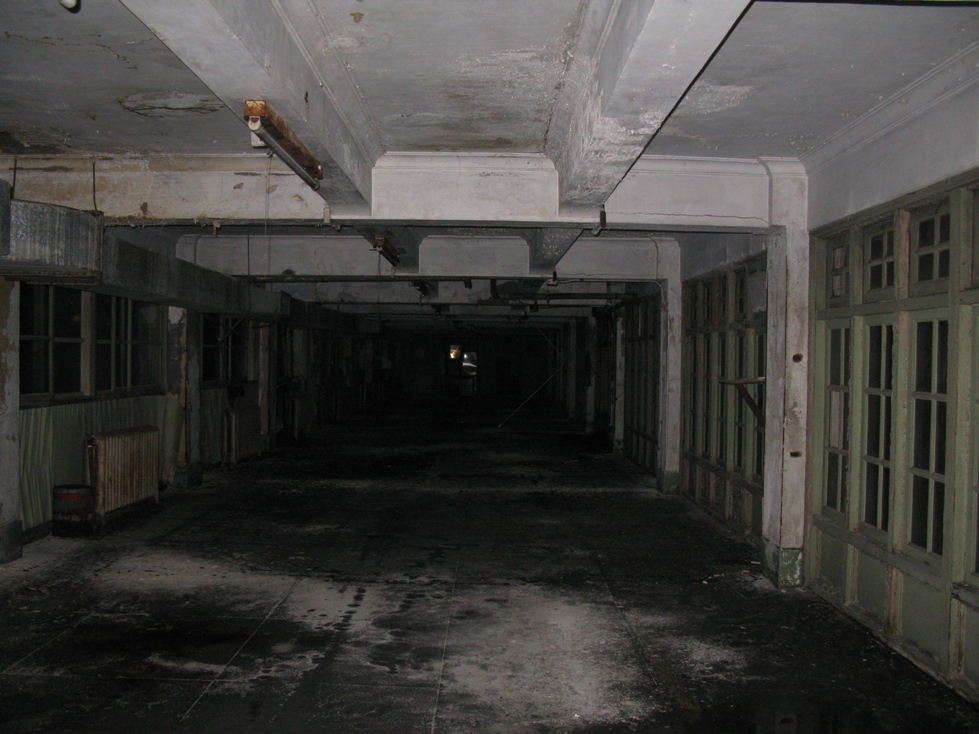
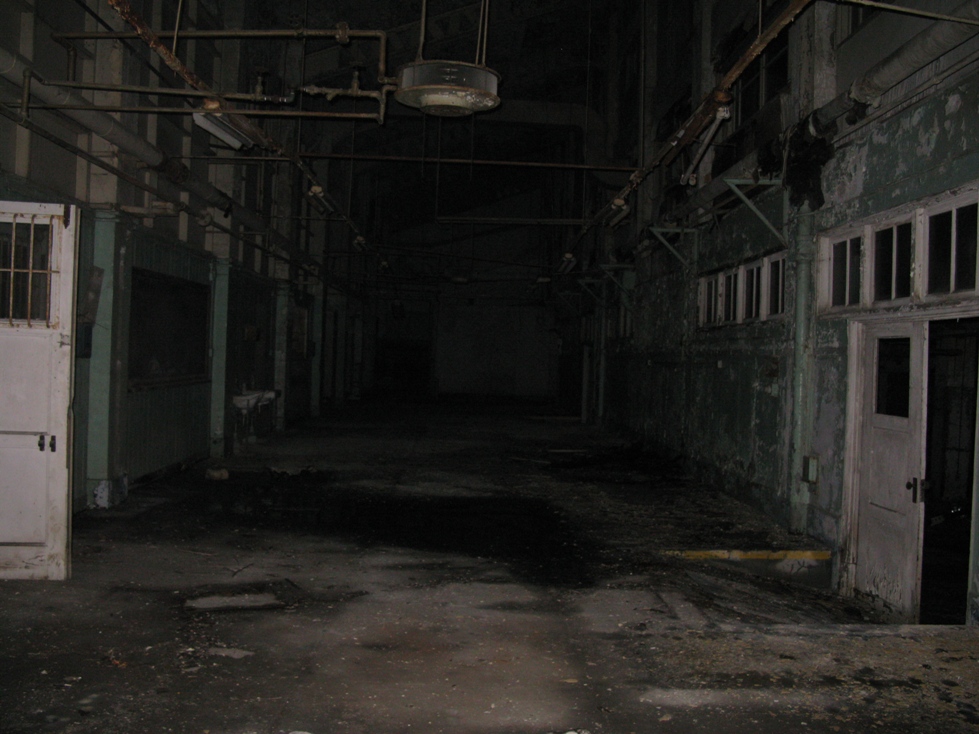
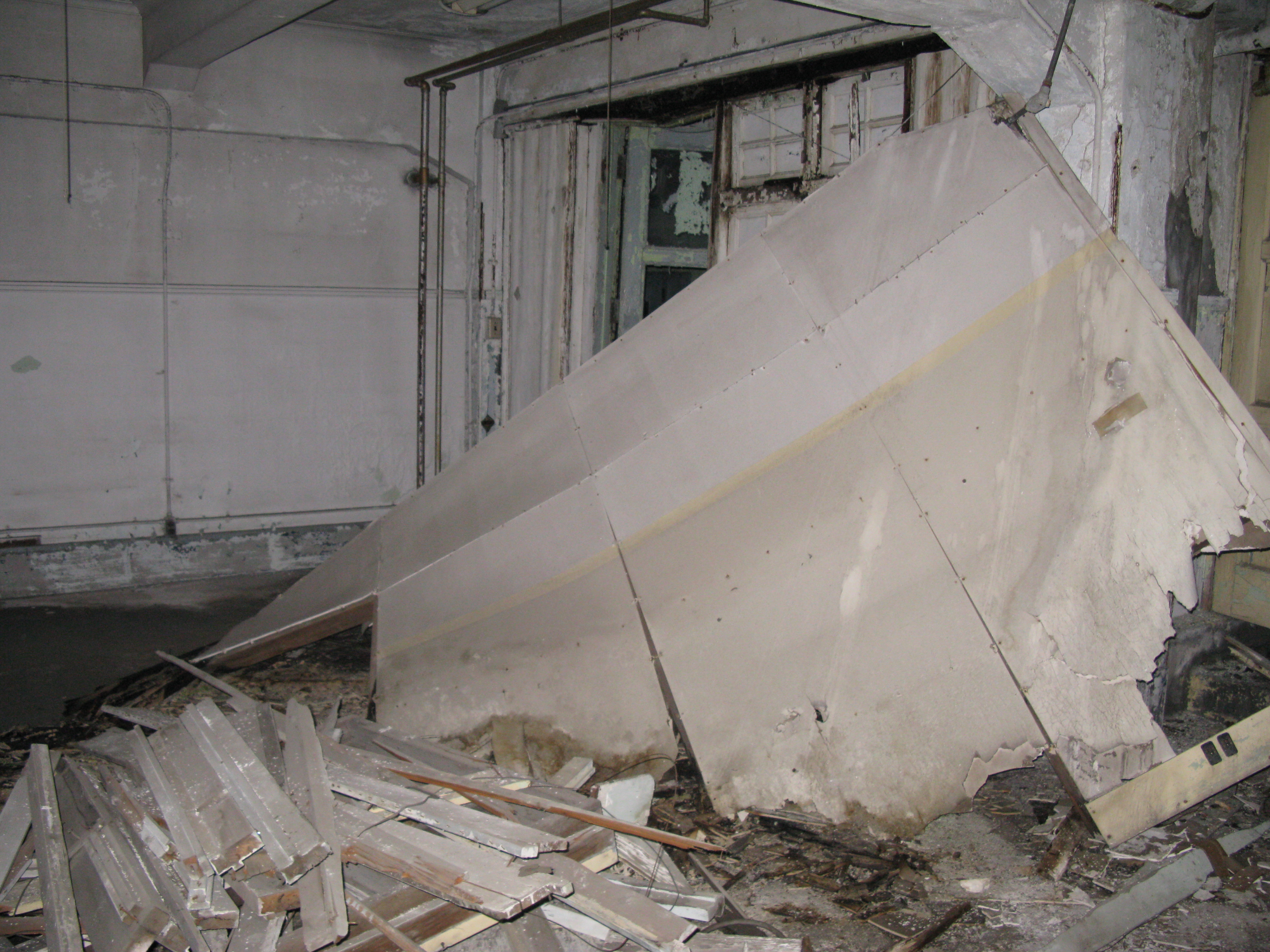
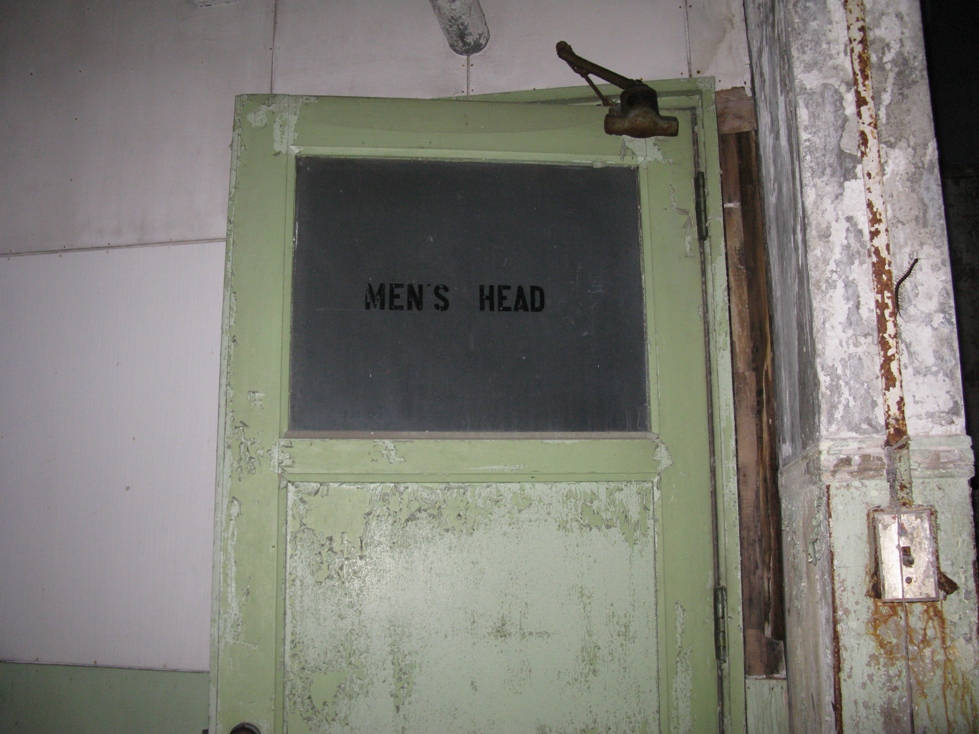
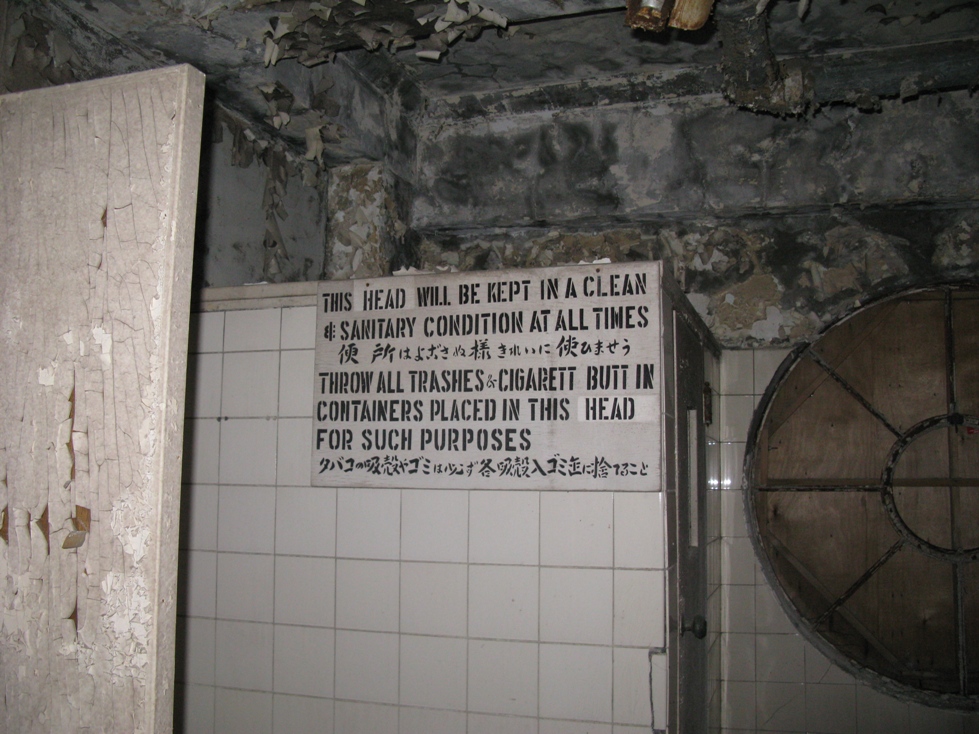
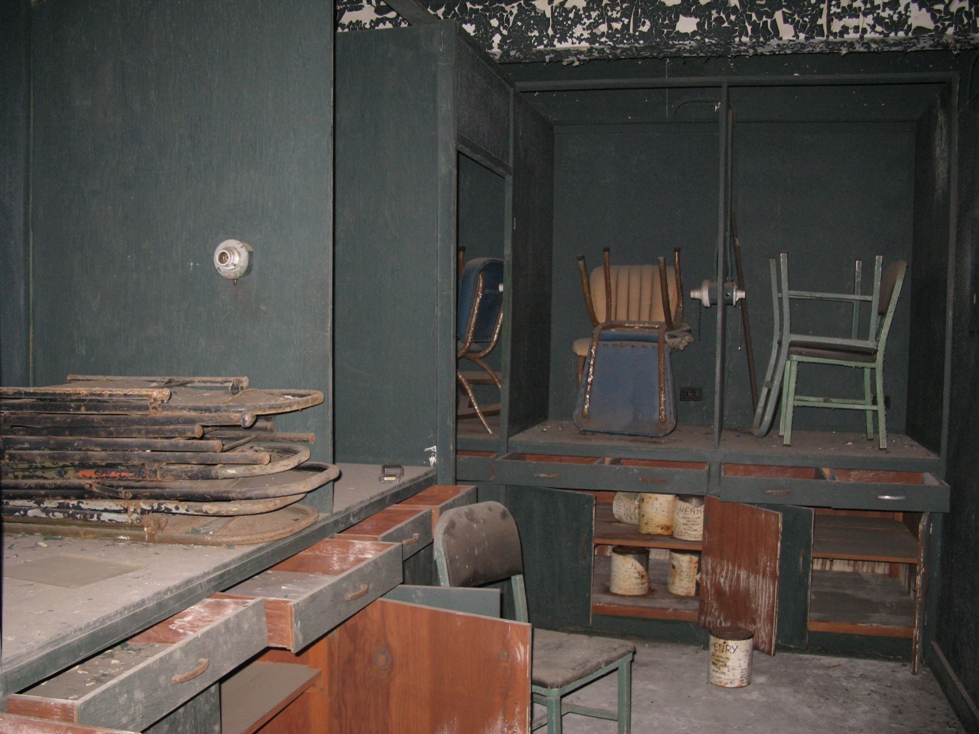
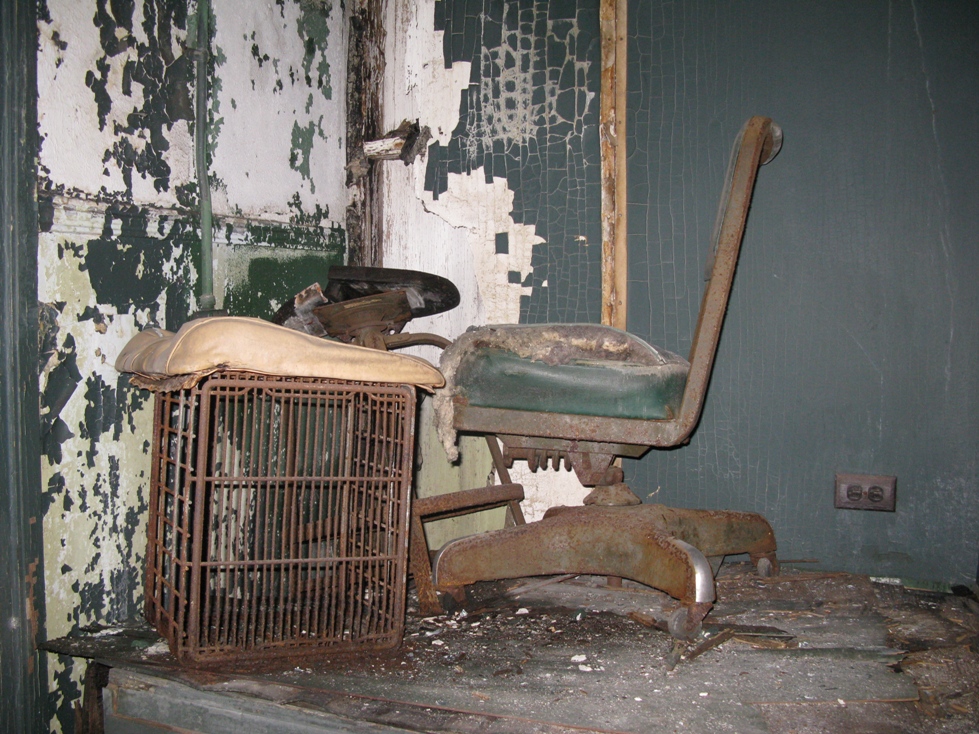
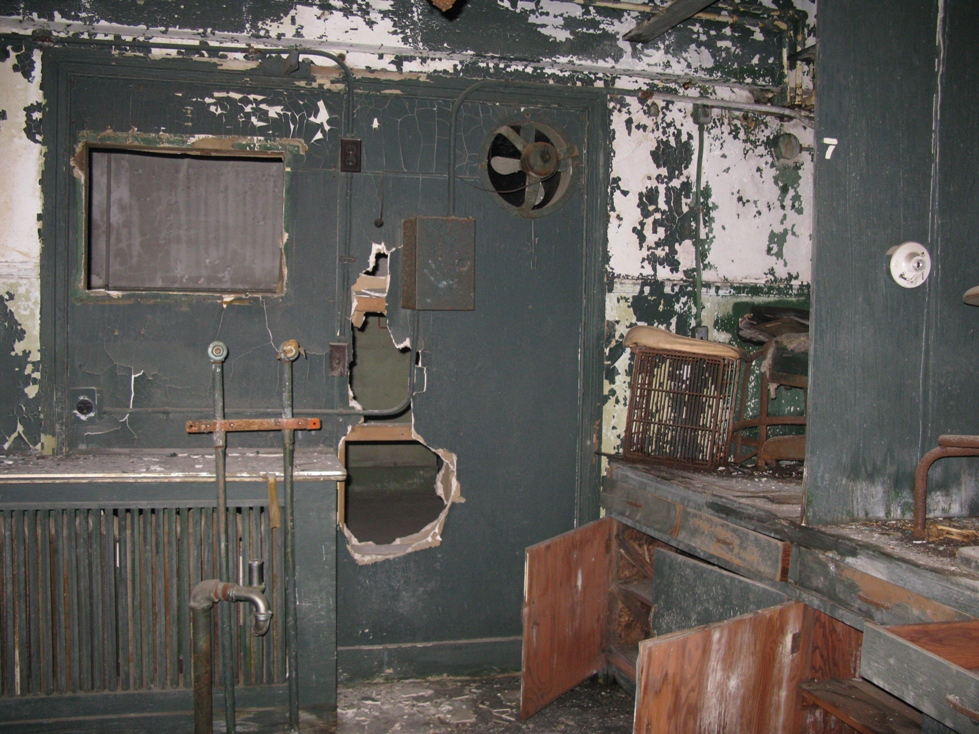
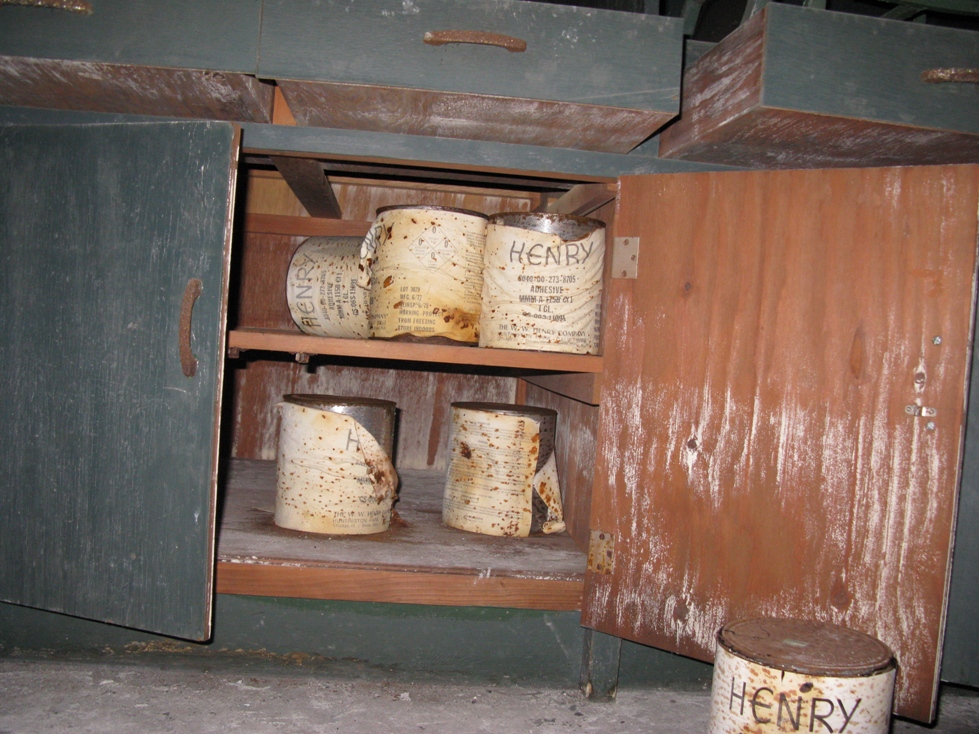
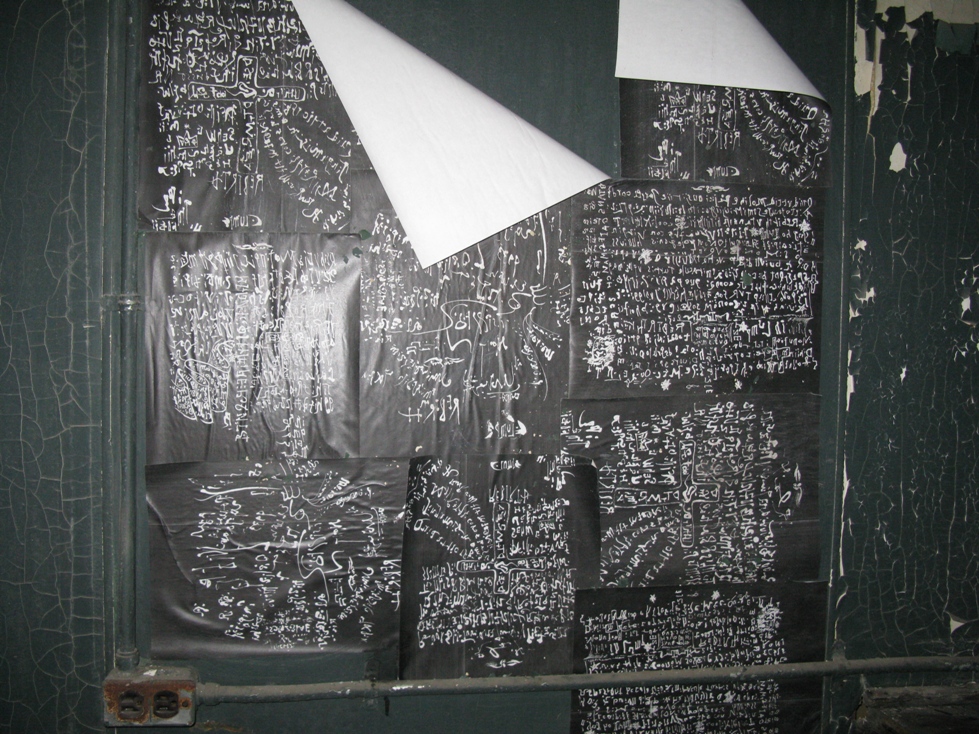
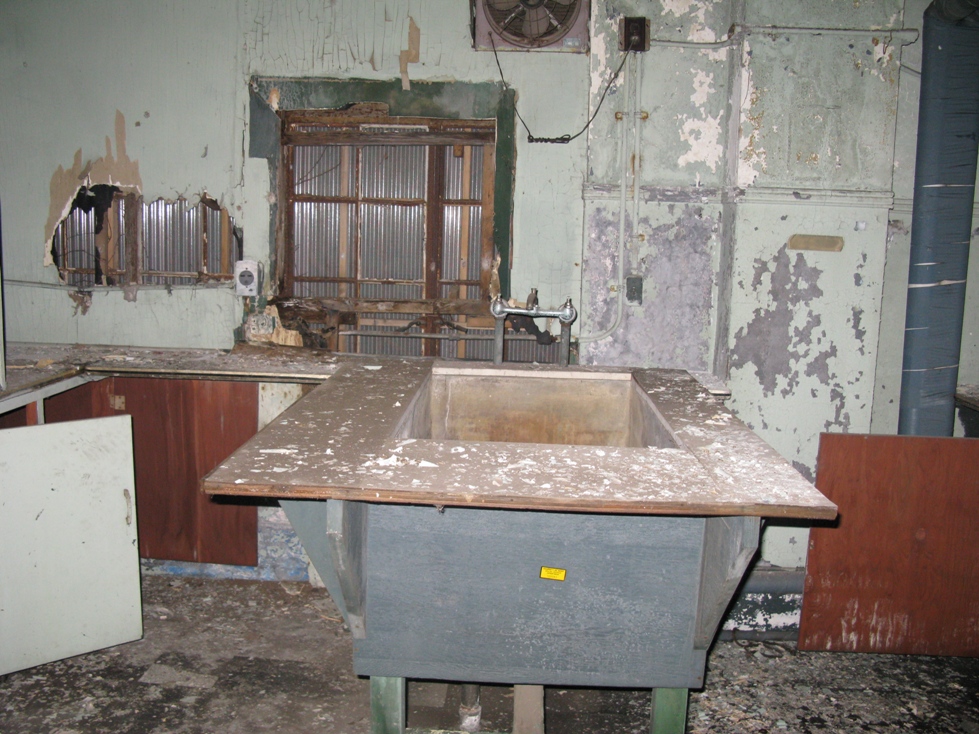
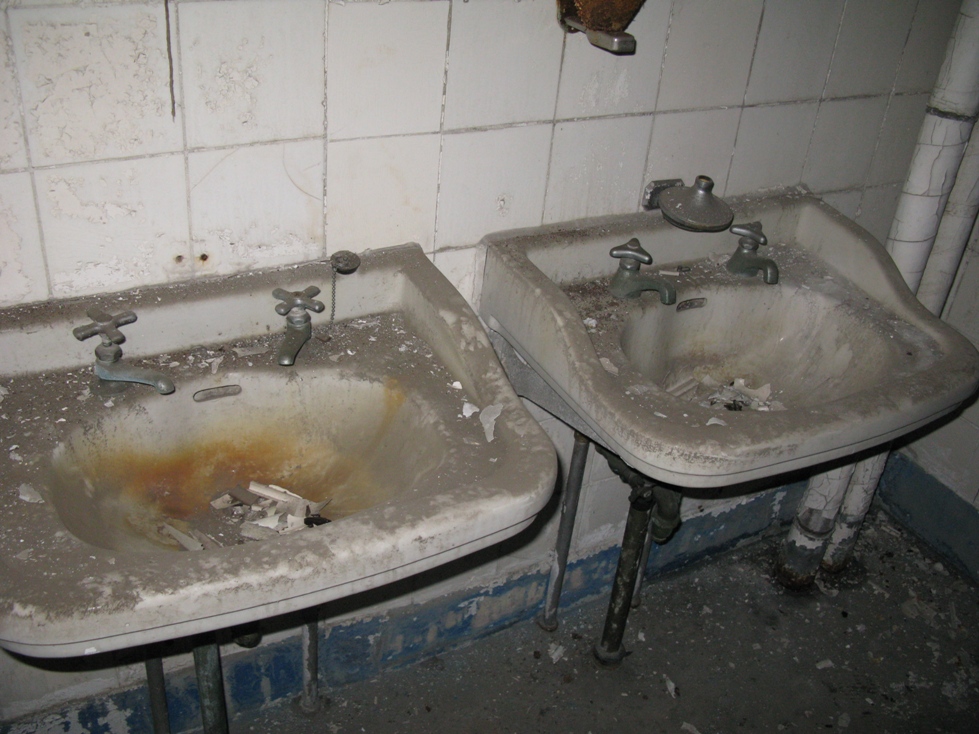
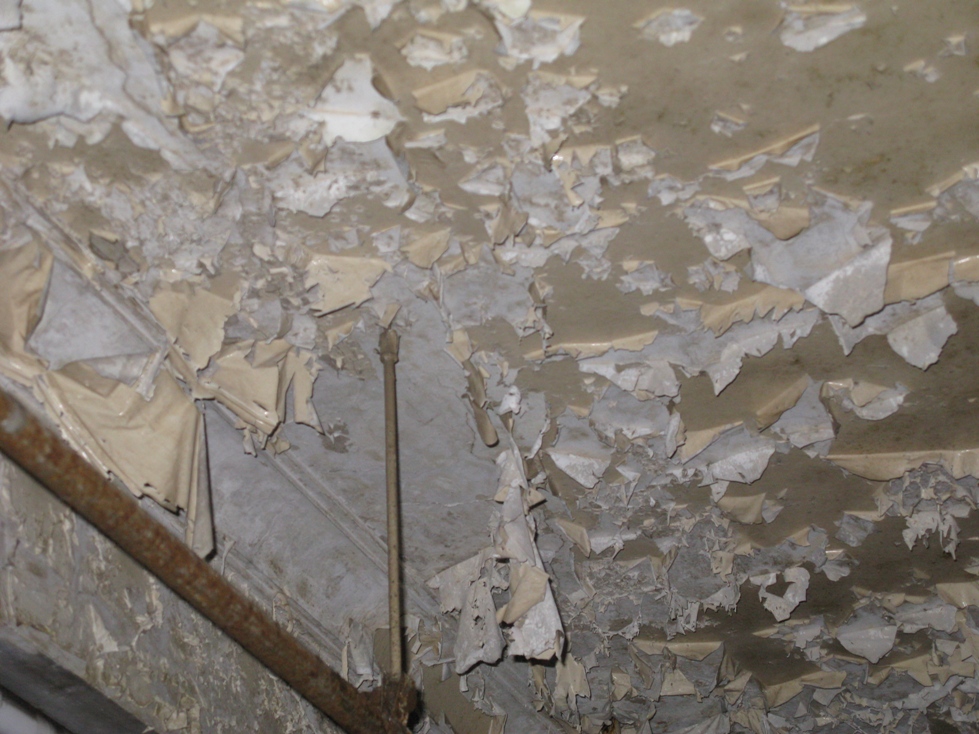
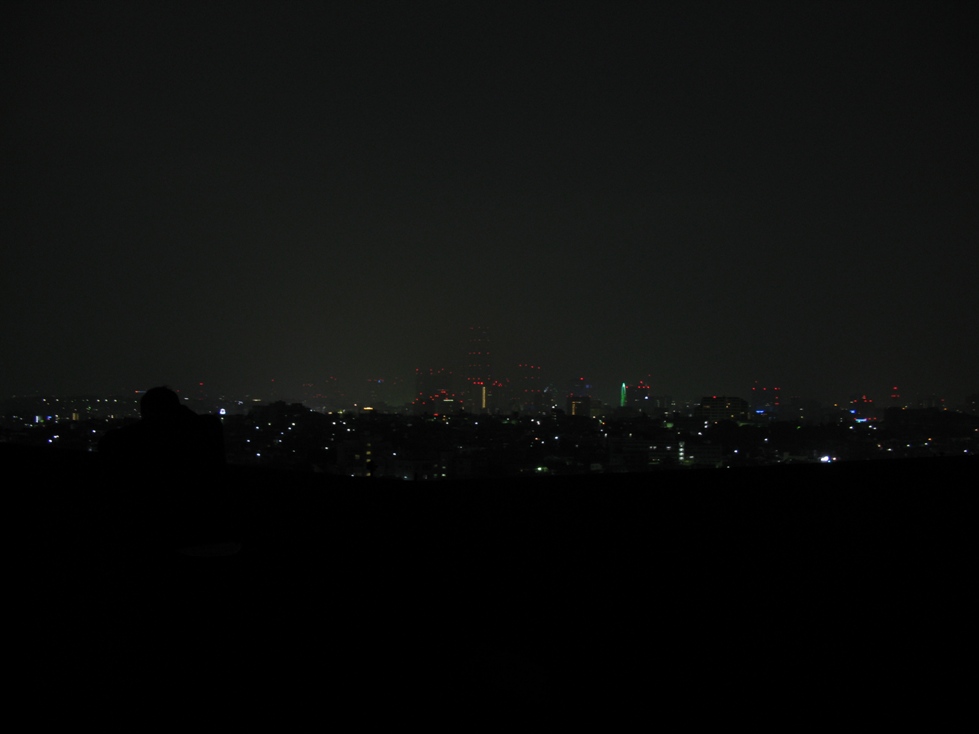
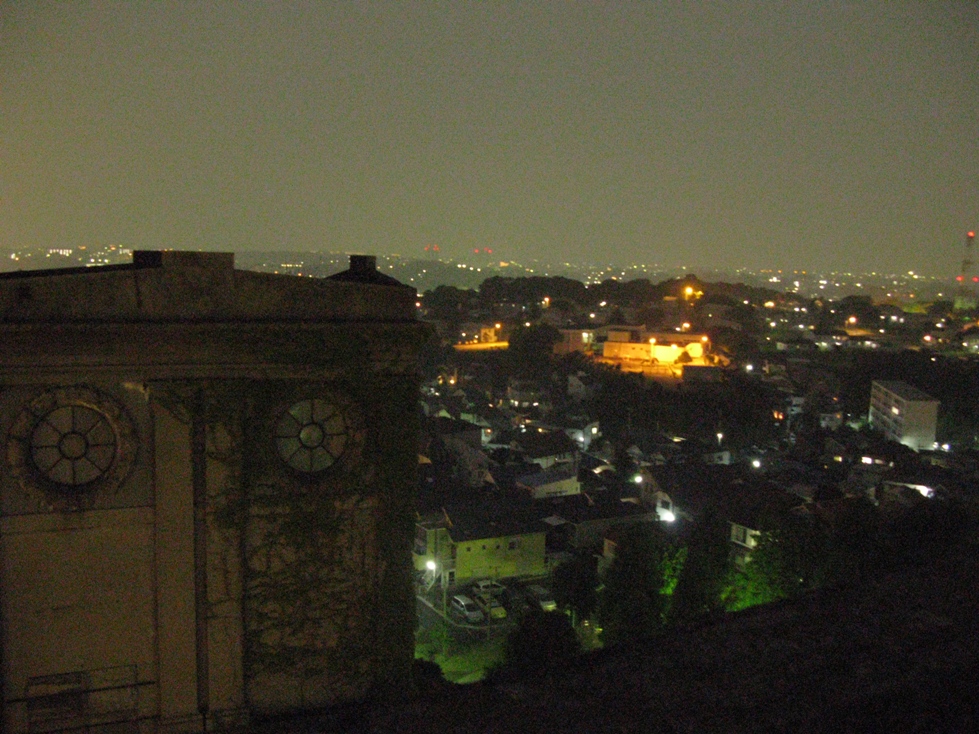

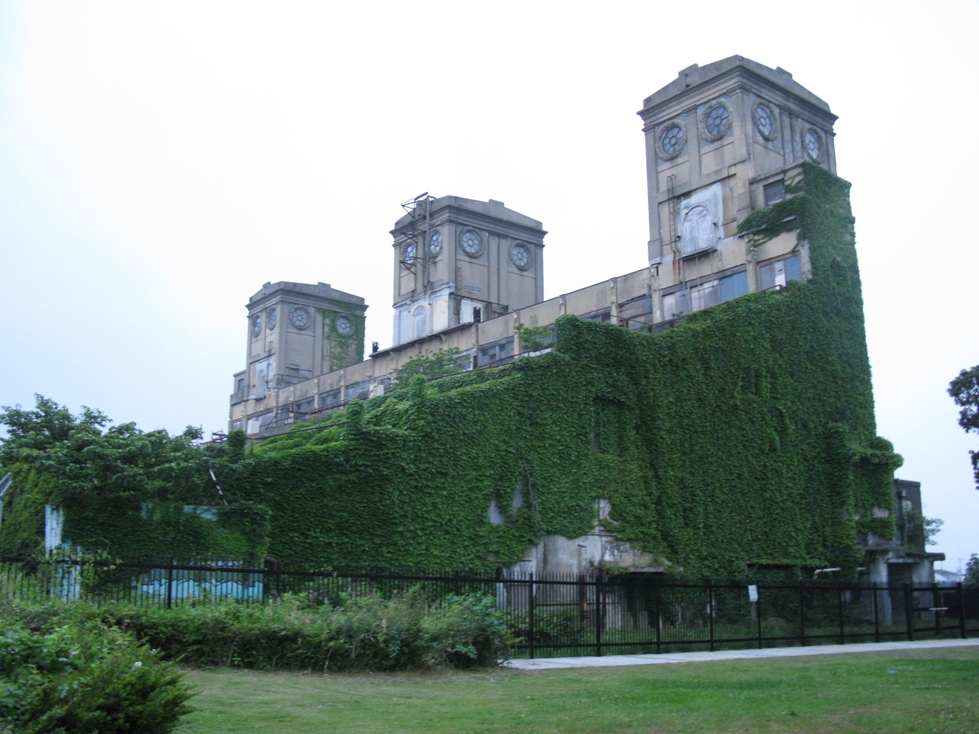
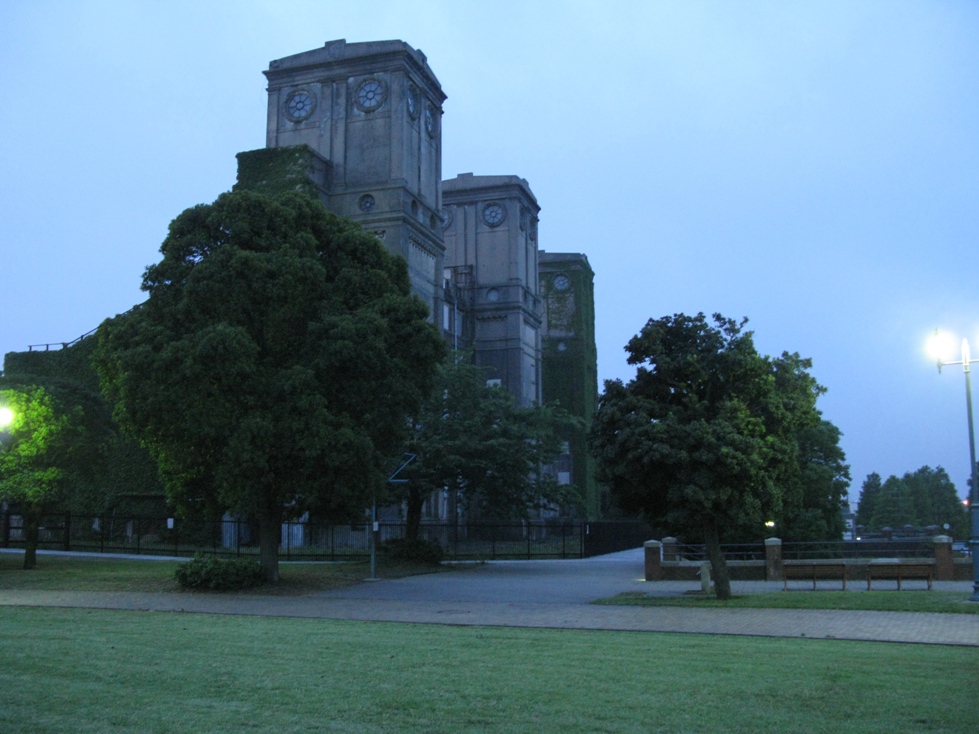
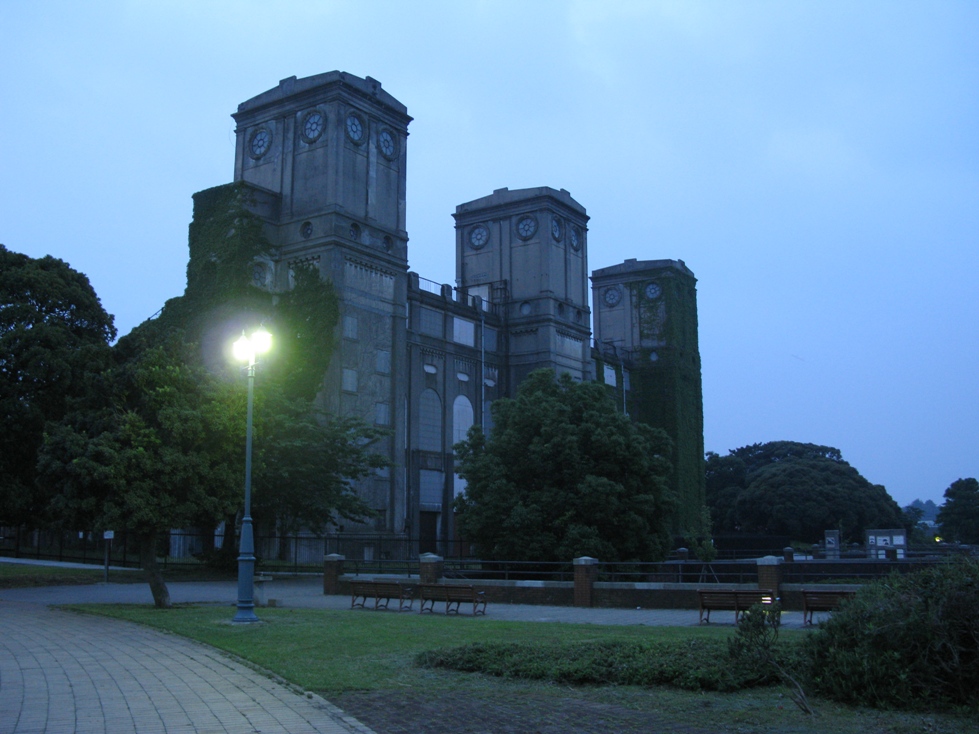
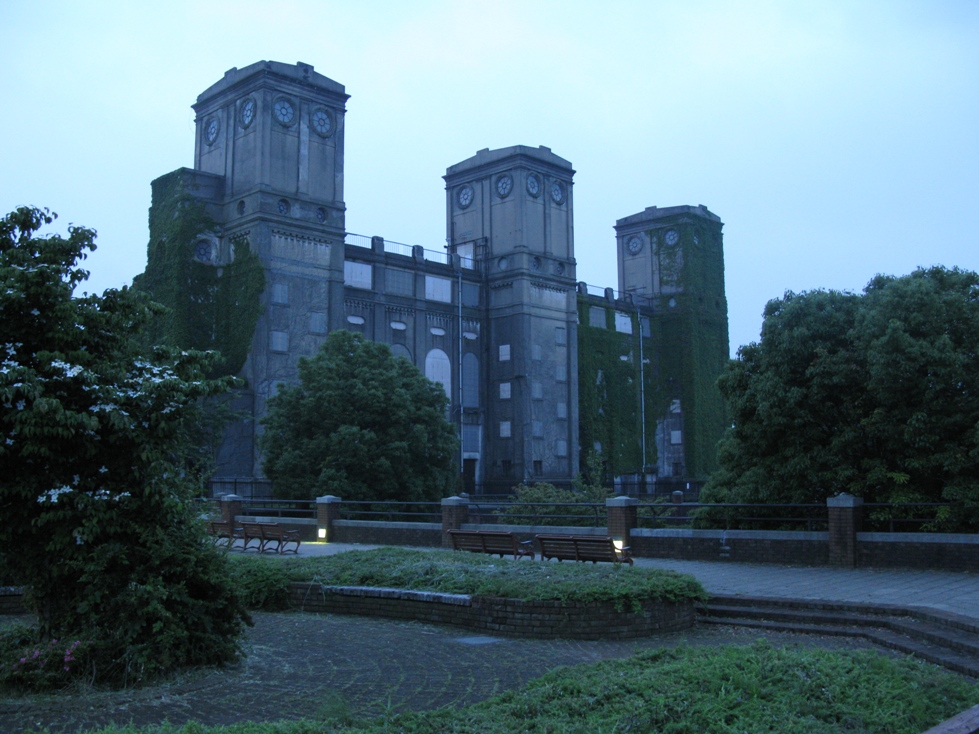
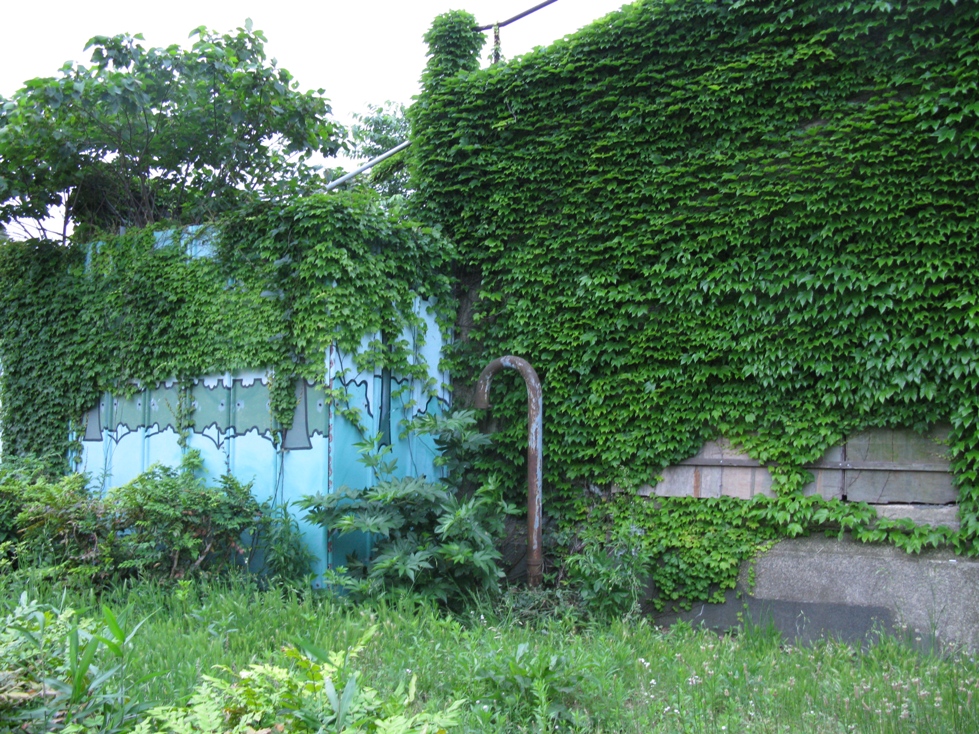
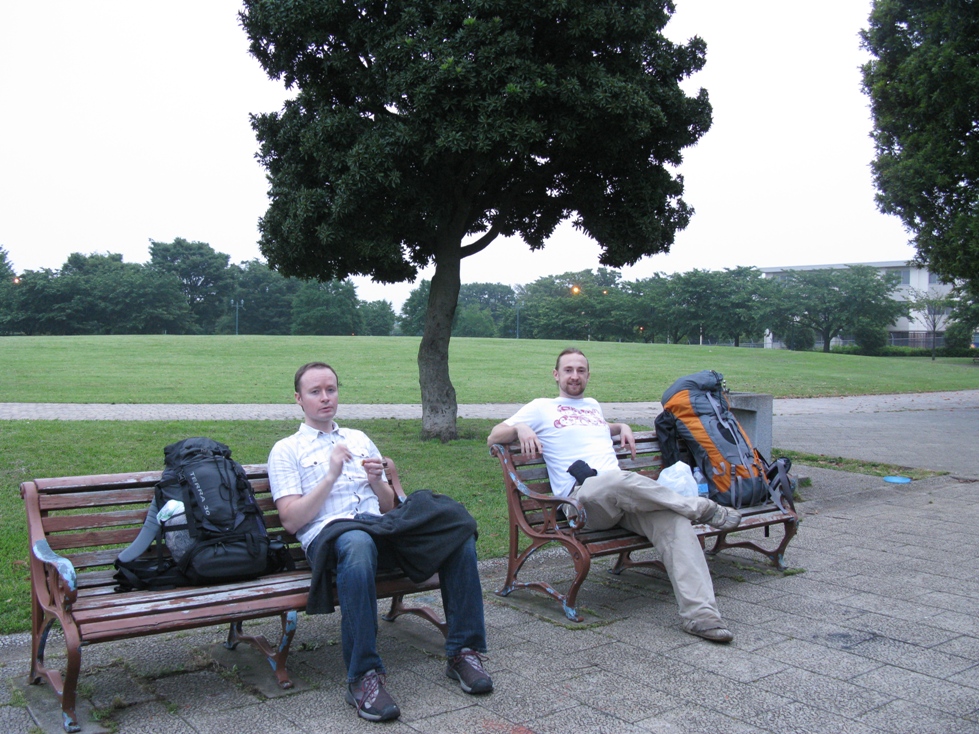




Comments 61
Pretty cool. I saw this place in a Japanese Haikyo website. But I don’t think they had the interior pictures that you had.
Funny how the signs for the bathrooms say “head”. And amazing how high up the vines go.
Author
I only wish we could’ve been in there during good daylight- the photos would have been much better.
Good write up bud! You beat me too it!
I told my two Monday students about the haikyo (the two hot girls) and they kind of freaked out. Thought I was totally nuts. ha! They said they’d never consider doing anything like that in a million years. To each his (her) own I guess!
Author
It was kind of nuts- double-fencing it right next to the base. That’s good though, it allows us to boldly go where few men (only the nuts) have gone before.
I’m impressed by your adventure! Was it scary inside?
Author
Tom, thanks- but it wasn’t so scary since I had a friend along. Having one more light source/flashlight really opens the place out, gives you that peripheral vision that lets you feel that your back is covered. It’s the solo ones where you only have one perspective and one light source and one pair of eyes that are really scary. The Sports World one was like that.
GGGGAAAAAARRRRR
Damn you Grist. This site is bloody fascinating, it is a quarter to one and I have a full day at work tomorrow. I will certainly link to you when I next dive into the HTML section of my very simple webbage, as soon as possible.
This is truly a fascinating place to be!
Inspired.
Have you been to Gunkajima – I was watching YOUTUBES about it this week. Bloody fascinating.
Author
Hey Sarah, glad you like the site 🙂
Gunkanjima, I’d love to go, but it’s a helluva long way away, plus I hear now they are doing building work on it, making a walkway for tourists to walk around. Maybe I’ll go then, but once it’s no longer ‘abandoned’ like that it’ll probably seem a fair bit less interesting to me.
I used to live in Negishi as a kid, 84-91, and we would explore the grandstand almost once a month until we became teenagers and decided to hit the bars. In the 80’s there was a second section connected to the main grandstand. The section was almost double the size and had more rooms for exploring. Also, there was a section in the back, underneath the current park, that was a maze of ceramic tile. The scary part about exploring the grandstand were the mentally confused homeless people living there. It seemed like they had night vision because they knew exactly where we were, in almost pitch dark areas. Certainly one of the highlights of my childhood. I’ll never forget the adventures in the grandstand.
Oh, there’s also a secret maze underneath the Negishi base. I would say the maze is close to 50 miles of twisted rock. We only made it half way, but found a ton of WWII stuff, including armament. I remember four maze entrances – and one led to a large underground pool with two gigantic metal cased doors. We never got past that part, obviously.
Author
Brian- that’s fascinating- I had no idea about the mazes underneath- finding old WW2 armaments must’ve been mind-blowing, I’d love to have seen that. I wonder if the tunnels are still there, or if any of them have access through the Grandstand? If so, and you feel like directing me- it could worth me taking a trip back just to see if they’ve welded the door shut or not.
So 84-91 it was easier to access the Grandstand? As of right now- it would be very difficult for confused homeless people to get in- it takes a concerted effort to broach the two fences.
Thanks a lot for the great comment.
Yeah, it was fairly easy. The second part of the grandstand was almost twice the size of the first, allowing more access to the connected buildings. The perimeter was secured with just a chain link fence.
Oh, and the 50 mile estimate is based off of what some senior citizens told us. This may or may not be true, and it was in kilometers, so sorry about the exaggeration. And to clarify one more thing, we would start exploring the caves in the morning and wouldn’t be out will dusk. So, either we walked in circles or really deep into the caves. The maze was something else, and given the movie “Goonies” just released we were psyched to start spelunking.
I’ll try and pinpoint the entrance areas using googlemaps and email them to you.
I know this is from years ago when you wrote this. I live in Negishi now . Where are the entrances to the maze underground. I have looked lightly but would love to go exploring.
Author
Brian- Entrance areas via Google would be excellent, I’d really appreciate it, especially if any of them turn out to be still accessible. I don’t have too high hopes on that score- it seems they’ve really clamped down since you were exploring- but fingers crossed all the same.
Goonies had the same effect on me as a kid- inspirational. Can probably draw a line direct from that, alongside other movies like Indiana Jones, to this haikyo-ing hobby now.
You spent all day in the mazes? That sounds amazing. Did you worry about getting lost? I guess you went in with flashlights. What did you think the purpose of the tunnels were?
Oh wow, this is so neat! I’m about to relocate to Yokosuka so I’ll be sure to check this place out — at least from the outside.
(Your blog is very interesting! I came here via your story “The Mistman” over at Byzarium, which was also really well done!)
Author
NTG- Thanks for the great comment, I’m glad you enjoyed the Mistman too, that story was in the pipeline at Byzarium for quite a while, wasn’t sure it was going to make it. Yokosuka area stuff- I’ve got another haikyo there coming up soon- hidden underground World War 2 era caverns!
the designation head for the bathroom is a navy term.
Howdy. I am Yo-Hi class of 1972. Your photos brought back a lot of memories. We had many rock band rehearsals and jams at the Grandstand around 1970-ish. We played in one of the long rooms (looks like your picture #1) with a lot of windows near the top overlooking the track.
Jimmy Tamae
I attended Kinnick Middle School and Yo-Hi from October 71 to July 76. Lived at 578-C Negishi Heights. Enjoyed the “Biggest Little Chief’s Club” which was located below ground
Tim Allmond
Mike,
Are these grand stands near what use to be a nine hole golf course in negishi ?
yokohama brat from the mid-60’s to ”71,
James Becker, Kubasaki , Okinawa class of ”73
Brian, forgive me for commenting a question to mike instead of to you.
So let me ask you… are these race course stands next to what use to be a golf course in negishi ?
I use to be on the yohi golf team in ’69 or ’70.
James Becker,
negishi heights classmate ’64-’66,yohi classman ’68-’71,graduating at Kubasaki high School on Okinawa in 1973, now in Boston, MA area.
Author
Mendez- Thanks, I guess I knew that, but it just seemed very peculiar to bump into in the dark.
Jimmy- Thanks for the comment- band practise in the Grandstand sounds like a great way to rock out. I guess access was not really prohibited then- you’d have had a heck of a time getting guitars and drums over the fence in place today!
James- Hi, and thanks for your comments. About the golf course- there isn’t one there to my knowledge, though it is possible there used to be one where the park is now. But, hmm, it would’ve been very small, as the park is not very big.
Thanks for bringing back great memories. I lived in Negishi, from 68-70, when my father was stationed in Japan. I used to go to the Grandstand for various Special Services classes. Then in l980, my husband and I were transferred to Japan. We lived in Negishi then, too. I even taught Jazzercise in the Grandstand. The #10 photo of 30 looks very similar to the room I used. There was one extra feature, there was a round stained glass window and because one of the pieces was broken, pigeons would fly in while I taught class! That was an experience. Too bad that Japan does not have the money to restore it and use it as a museum. It has so much history. Yes, to the question about it being near a golf course. The park in front of it was a golf course, but it was turned over to the Japanese and they made it into a green park, with an added Equine Museum. It is beautiful during azalea season. We even went skiing in the park, when it snowed, I think that was in 1983 or 4. Thanks for the memories.
I taught school at YoHi for a couple of years in the late 1960s. Played golf during the summer at the Grand Stand and my wife taught at Byrd Elementary School. The first graders thought the school was named after me.
Very interesting.
Thanks for the memories.
What a walk down memory lane. I had the good fortune to live across the way from the Grandstand in Negishi Heights. My dad was Master Chief of the Command for USNRMC, Yokosuka, Japan (the Naval Hospital.)
We were stationed in Japan from Oct 71 to July 76. I also attended Kinnick Middle School (Yo-Mi) and Kinnick High School (Yo-Hi). Our neighbor was one of the secretaries at Byrd Elementary school.
I would make several trips to the “Stop and Shop” (which was located in the remnants.) My buddies and I would venture forth into parts unknown. We had to be especially careful as the Shore Patrol (Navy Police) and the Japanese Security Guards had their headquarters situated in the remaining section. We located the “betting windows” which were clearly visible to passers by. We also ventured up narrowing stairways which ended in walls (sort of like the Winchester Mystery Mansion in San Jose, CA.) I remember working on our ’68 Pontiac in the “Special Services” garage (located at the other end of the grandstand.)
Earlier in the year I read an article that proclaimed that Gen. Douglas MacArthur had copies of the Japanese Surrender documents printed on the presses which were housed inside the grandstand. There was a rumor that those same presses were used by the Japanese Imperial Army to print counterfeit currency during the war.
I would like to know what has happened to the “Chief’s Club” and the bowling alley. Those areas were accessible from an entry way located at the ground level (behind the remaining sections of the grandstand.) One would descend two storys down a winding stairway to a room that lead to the Chief’s Club and a bowling alley.
There was also a “Motor Pool” which was secured inside a six foot high chain link fence adorned with barbed wire. Of all the trailers that were placed there, one was most curious. For some reason it was a trailer that had painted on the visible side the cast of the TV show “Bonanza.” It also had the logo for NBC and the name of the show.
Anyway I love what you have done. I really think that the abandoned grandstand should get some sort of national attention. When you consider its history, (the wooden structure before it was destroyed as a result of the Great Kanto Plains Earthquake on September 1, 1923; the part that it played during the Second World War; the U.S. Military use after the war; the vast underground four story basement and such) this is an edifice begging to have its story told. I could see this being an episode of “Lost Cities of the Underworld”, “Ghost Adventurers”, or even “Ghost Hunters” from TAPS.
I lived in Yokohama Base Housing during 1975-77 and was the leader of an BSA Explorer group that met in the grandstand. At that time parts of the building were still being used by the Navy and I had and took the opportunity to explore high and wide. Sadly, I do not believe that I took any pictures during that time.
Does anyone have more history about the foreigner civilians who had been living in the Yokohama area at the time of WWII. They were held prisoners at the grandstand during the war.
It is very unfortunate that the building will one day just fall in on itself and that hisory will be gone.
Author
Kathleen- Thanks for sharing your memories, I’m very happy to have helped jog a few. Interesting about the golf course, I really wouldn’t have thought there was enough space, but I suppose they may have built houses over some of now.
Ron- Thanks for commenting, and my pleasure to stir up some memories.
Tim- Thanks a lot, and further to our email correspondence- here are some of the photos you sent me, with your comments:
“I think that you will find these informative. The image “Commissary” is purported to be inside the grandstand shortly after WWII. It does look like the inside (from what I recall over the past 34 years.
In the image “byrd” you will be able to see the grandstands from the vantage point of the elementary school.
“Grandstand74” was taken from my front porch. The woman in the photograph is my mom.
In front of her is our ’68 Pontiac Executive. This is the one that I mentioned in the post. The Cherry Blossoms are in full bloom, so it must be April.
“Grandstand74A” was taken on the same day (according to my recollection.) I had to cross the street and venture down the hill, that is why the Cherry Blossom trees are not visible.
“Housing2” is a picture of where I used to live. Our quarters is the one with the tree blocking the view of the second story bedroom window. The photos that are mine are “GrandStand74” and “Grandstand74A.” The other ones I was able to find on line. A few years back I located some pictures that were taken from the TOP of the grandstand, looking toward the towers.
Thanks a lot Tim! I’ll have to go back and see what I can do about getting into the huge basement. Probably a bit dangerous though, so we’ll see.
Art- I had no idea the Grandstand was used as a prison- the same as was done with the Japanese in the Us during the war I suppose. As for the place collapsing- I hope they’ll do something with it- in the UK it would likely be turned into a museum or yuppie housing. In Japan, I don’t know that the demand or drive is there for either of those.
I lived in Yokohama from 1979 to 1989. I remember when they tore down the one side of the Grandstand.We used to sneak in there when I was a teen .Lots of memory.
Enjoyed your pix of the racetrack grandstand. I lived in Negishi Hts military housing area (near where Byrd Elementary was located (in the pix above)). I hung around the grandstand alot–the shuttle bus to the other base areas below the Negishi bluff turned around there and I caught it there while it waited. I went to Jr and Sr high school at Yokohama High School (later named Nile C. Kinnick H.S.) from 1958-64). Jim Becker was correct (I remember him)–there was a golf course in the area inside where the oval track was. There was a road that went around the oval where the track was. Across the “street” from the grandstand area where the ground dipped downed into the bowl inside the track was a club for teenagers called the Neet Nac Club (“canteen” backwards) that was dedicated by Gen Douglas MacArther’s wife during the occupation. It was later moved to the “community center” area below the upper bluff, not too far from the HS. I saw one of the first space capsules in the Friendship Seven series of astronaut launches in one of the grandstands. Emporer Hirohito attended a race or two at that racetrack prewar. I never knew about the tunnels under–not surprised they exist though–I went to elementary school grades 4-6 at Yokosuka US Navy base in the 1950s and the base was full of tunnels dug by the Japanese navy for bomb shelter and as a place for operations and construction. I climbed through a few until they were mostly sealed off for safety (some were used by the USN as cold war bomb shelters and for storage) after a classmate of mine found an old grenade and decided to see if it worked. It did. Another classmate died when he fell off a cliff exploring old caves and WWII sites on Yokosuka Naval Base. Then they really clamped down and put up a lot of chain link fences. If you really want to do some fascinating exploring, try to wangle a visit to Iwo Jima. I did some exploring there when I was in the AF and flew Learjets there to support the then US Coast Guard Loran C station. Their small base was located at the final-stand area for Gen Kurobayashi, whose remains were never found. Lots of interesting stories to tell and places to find that still haven’t been discovered. Also quite dangerous since the honeycomb caves have toxic fumes and a tenency to collapse. Be careful out there! Bob
Thanks for all your photos, video! Yo-Hi class of ’78 here. I took many art classes in the Grandstand. Spent a lot of time exploring it after it closed down. Someone asked earlier about the golf course. The golf course is no longer and a park is in its place. Part of it, past the little fire station, is an equestrian museum. The American houses leading to the base have been gutted (I used to live in one) and as of late last summer, they have done nothing in that area, you can see the concrete slabs.
I will have to find the back way in, Mike! I know they were working on it a couple years back but I was not aware that it has been completed. Thank you again!
I have just discovered your site recently, and was wondering if you had heard of a theme park called Nara Dreamland. It is a rip off of disneyland and is probably as close as one can come to seeing disneyland in disrepair. Might be worth checking out if it interests you, I suppose.
Author
Thanks for the comments everyone. Great tip Bob about Iwo Jima, maybe someday I’ll get out there. Tamy- if you ever find a way back n, please let me know! And John, yes I knew about Nara Dreamland, closed down in 2006. I heard it has a security guard, but maybe he’d turn a blind eye. If I get out to Kansai area it’ll probably be on my shopping list, thanks.
Wow! Does this ever bring back memories. Our family lived in the Bayview housing area (65-69) only a couple of miles from Nigeshi Racetrack. Spent many hours there taking Special Services classes and using the slot-car track. My friend’s father was the head of Security for the base and he had an office there. I do remember a 9-hole golf course located in the infield. It’s too bad that it has been allowed to fall into such disrepair because it is so architecturally significant. Thanks
wow thanks for sharing! i lived at negishi in the early/mid 90’s and always wanted to explore the grandstands but was waaay too chicken to do it.
Had a great time seeing your pics and reading all the posts about Negishi. We were stationed there in the mid 70’s and the grandstand was very full of activity at that time. We attended classes there, special services were there and it seemed like we were always going to the grandstand for something. Thanks for bringing back such good memories.
Hi Bob, Yep, I remeber wandering around the Grand Stands like it was yesterday! It had the Hobby Shops for woodworking, photography and autos ( There’s a photo of the photoshop door in this blog). There were unattended cigarette machines there so we would go there to buy smokes. In the mid 60’s I went there for the first time to see the visiting Mercury Space Capsule. Like somebody else wrote about, I spent many a day there in the hobbyshop slotcar tracks. I climbed up the back wall firescape to get on the roof. STUPID! The roof was crumbling and I almost froze at the thought of going back down. The Shore Patrol had thier impound lot there and I snuck in to joy-ride a honda cub that they left the keys in… I got caught but they didn’t call my parents. Along the top of the stans were these panoramic rooms. I heard a band practicing trying to get a song by Free (Alright Now) right. I knew the song (drums) so I went up there to show them and met Roy Tamanaha for the first time. My dad aquired a room for the Explorer Scouts to do electronics stuff on the end that burned down a few years ago. The MARS ( Military Affiliated Radio) room was down the hall. They porvided an HF “SKYPE”-like service for families to stay in touch with the states. I helped there a few times. The hardest thing was to tell non-radio people to say “OVER” at the end of the sentence. I lived next to the 9 hole golf course that was the track itself. I got hit by a golfball in the backyard once. Hurt like hell. I liked it when Generals would fly in with thier Huey to “play a round”. Typical military, there would be a parade of Fire Trucks and staff cars. Whoooaaa I’m dating myself!!!!!! Kent Rhodes, Seattle
PS I wish somebody would write about the Kishine Barracks in Yokohama. A very sad storyof the Vietnam War that was wiped clean off the books. Where many died short of “making it home” and not a trace of it remains.
Our family lived in the Bayview housing off from D Ave in Yokohama around 1970-1972.
I remember exploring the grandstand with my friends Kent R. and Bob D.
What memories !!
Wow great site and what a trip down memory lane. I lived in negishi from 86 to 90. Moved back to Japan in 94 and have been here for the most part since. I now live in Yokosuka. We used to party as teenagers in the part that was behind the building that is cuurently standing. It was really easy access as we climbed through some windows that led into a parking garage area. We would walk up untill we found the door and then go into the second level which I guess was an old club. We found what we believed to be an old bank vault as it had a huge safe that we would all party in at night.
We would even walk over to the old bowling alley that still had balls and pins and bowl a few games for free. That is if you could actually get the ball to go where you wanted since the lanes by this time were in bad shape. They even had the remains of some pinball machines. One sounded as though it still had money in it. Of course it could have just been the guts rattling around. I think you would have enjoyed exploring that section because we sure did.
There is alos an old old japanese style japanese house in the middle of the base. Few people even know it’s there but as kids we explored everywhere. Had some junk in it but my memory has faded now.
Fasinating stuff. How can such an amazing building be left to decay like this
Do youdo this for the challenge of getting in and exploring , or because it the buildings history?
fun whatever though
Author
Hi Rocking Horses, for all of the reasons you mention, plus a few more- the challenge to photograph the place, the fun of blogging about it and sharing it with a wider audience after the fact, and the occasional odd feeling of disconnect these places provide.
Hey, Tim Allmond! If you’re still perusing this blog, give me a shout! (Webmaster, it’s okay to give him my addy). It’s been too long, you know?
Just got back from a visit to Japan this August. Walked to the Grandstands and was stunned at how little was left. Guess I should’ve visited this site, first. 🙂
At least the new park is nice, and the plaques they have up, showing the early years of the track and stands are informative.
HOW FUNNY.
I’m the new Yokohama Detachment Negishi OIC. I just took over. Been researching a little about the Grandstands right outside my office b/c Yokohama City agreed to open it up for a personal tour to our office sometime in November.
Now I’m watching it on the web (done illegally of course). But I have to say, those are some great pictures…
Superb post to have read on my break!
Wow great site and what a trip down memory lane. I lived in negishi from 86 to 90. Moved back to Japan in 94 and have been here for the most part since. I now live in Yokosuka. We used to party as teenagers in the part that was behind the building that is cuurently standing. It was really easy access as we climbed through some windows that led into a parking garage area. We would walk up untill we found the door and then go into the second level which I guess was an old club. We found what we believed to be an old bank vault as it had a huge safe that we would all party in at night.
We would even walk over to the old bowling alley that still had balls and pins and bowl a few games for free. That is if you could actually get the ball to go where you wanted since the lanes by this time were in bad shape. They even had the remains of some pinball machines. One sounded as though it still had money in it. Of course it could have just been the guts rattling around. I think you would have enjoyed exploring that section because we sure did.
There is alos an old old japanese style japanese house in the middle of the base. Few people even know it’s there but as kids we explored everywhere. Had some junk in it but my memory has faded now.
Great photos!!! I really love these lost places that look like the workers will come back to work in some minutes.
I took many art classes in the Grandstand. Spent a lot of time exploring it after it closed down. Someone asked earlier about the golf course. The golf course is no longer and a park is in its place. Part of it, past the little fire station, is an equestrian museum.
I live in Negishi and have wanted to take tours of the Grandstand for a while now, but unfortunately they’ve stopped doing tours. I might have to do some urban exploring if I ever want to see it first hand! j/k. The pictures are awesome. I love seeing the Grandstand on my way to and from work.
On a clear day you can see Mt. Fuji. The view of Yokohama is breathtaking as well!
I was the class of 1973 and worked at the Navy Exchange Gas station for a year and a half before I left Japan for California. There use to be a hobby shop at the grand stand facility and I painted my 1969 Ford Fairlane GT A. I use to also eat at the snack bar at the golf course. They called it the (18th hole)!
Great times!
Author
Here’s an image of the racecourse in September 1945- sent me by G. Mailander. He says-

“Picture taken by an old veteran of the 1st Cavalry Division when elements were camped out on the grounds. Was stationed in Yokosuka in 1963-1966. There was a golf course in the center of the track area as I recall.”
The US Army took over the grandstand after WWII and installed a VHF Radio Relay terminal run by the Signal Corps with the customary Japanese technicians augmenting the GI staff (or maybe the other way around). It was on the top floor and a heavy duty AC generator was in the basement. The generator was a must so the terminal didn’t go off the air when the Japanese power dropped below 80 volts as the Yokohama population turned on their lights after dusk. I was assigned there from 1950 to 1953. The golf course was in full operation; I played my first and last game there. The ground floor was a motor pool. Every morning the trucks would be cranked up and the terminal would go off the air because of the static from the truck motors. Same game when the trucks came home in the afternoon.
Wow. It’s sad just how much the Grandstand has changed. It looks smaller than what I recall as a child, when I lived on Area 2 & Negishi (1978-84). The roof for the bleachers was still standing then, which made it much more impressionable. I remember having to go inside the building with my mom and sister, before we moved back to the States. I don’t remember what we where there for, but I recall the dark hallways that led away from the room we were in, the old peeling paint, and that old building smell.
My parents used to tell us, if we ever got into trouble with the law, we’d get locked up in the Grandstand jail. Supposedly the MP jail was located in the Stands. Based on a post here, I guess it did exist!
I never did find any caves to explore. However, I did often wander about with my dog, right along the thick bamboo edge of Negishi’s cliff’s 4 ft fencing. I often wondered why there was a locked gate, with a sign stating ’emergency use only’, and about 5 or 6 concrete steps leading down the steep edge. At the time, the cliff was still natural. Today, from recent Google Map photos I have seen, it appears to have been repaired/stabilized with huge square concrete slabs. I believe this was completed, due to a landslide. What is down right creepy, is that the location which the cliff had collapsed was where I had OFTEN rested on flattened cardboard boxes in the tall bamboo. It was a place to get away and watch the clouds take shape. Just me and my dog, Tippy.
Thanks for sharing the photos. I’m glad you and your friend were able to get a glance of the interior. May the Grandstand keep … standing for more years to come.
Mr. Finlley,
You must have arrived at the 8037th about the time I left, shortly after Christmas 1952 or in January ’53 (mind is slipping at 81). AN/TRAC-4 was installed then, but The FCC wanted its 88-10? MC for the new FM broadcast band. We were learning UHF on a system that had been dredged out of a depot boneyard somewhere; that may have been what you installed.
Like you, I arrived as a buck private and left as a sergeant. Sig Corps training after infantry basic at Fort Ord was at Fort Monmouth as Radio Repair MS0648.
The 803tth was a life experience for me.
Humphrey
Oh my, oh my. I have many pictures of the grandstands. I had arrived there in early 1953 and became a member the 8037 Army Unit (AU) Radio Relay Company. The 8037 was part of the 8047 AU Japan Signal Service Batt. At that time we had radio towers on the center tower and one of the side towers.
I arrived as a lowly Private (E2) and somehow got promoted to PFC (E3) much to dismay of my sergeant. We dispised each other. A short time later he had a chance to get rid of 3 people for temporary duty in another company of the 8047. I was sent to Camp Zama to help set up the communication for the new AFFE headquaters. If one should look at a modern picture of Camp Zama, one will see a radio tower rising up within the arms of the HQ. My work space was next to the tower which I climbed several times. From there we communicated with Negishi and other locations. In Zama I worked for a Master Sergeant, perhaps the best supervisor I ever had. Two weeks before my TDY was up he asked me whether I would like to move to permanent status with a promation to Corporal (E4). I of course said yes and he started the ball rolling. The next day Capt Rainey (8037 company commander) arrived to hear the sergeant and me argue our case. He said I would be hearing from him which I did the very next day. He stode in and handed me orders terminating my TDY. He told me to pack my bags and he would give ride. He knew I was severely disappointed; he then give me other orders promoting me to corporal. He then took me back to Negishi. But now my sergeant who I had dispised and I got along well together. He made me his second in command although I was out ranked by 2 or 3 corporals and one sergeant (E5). I was still 18. Early in 1954 the sergeant that I had despised rotated back to the states and I got his place and a set of sergeant stripes (E5). I had charge ol about 20 GIs and about 40 Japanese. Oh yes, I got charge of the entire grandstand. My first important task to do was to supervise a major upgrade of the radio equipment,etc. The first item was to move the center radio tower to a side building tower so that a new radio tower could be built in the center.
Then Japanese contractors build a new tower which is shown in some of the pictures. They also replaced that balky generator that has been mentioned, replacing it with 3 big generators that were in a building they build outside the center tower on the ground. They also put in new electrical wiring to handle the new load. We then installed the new radio equipent and the antennas on the tower. The latest pictures show the brackets that we installed to to hold the connecting cabels. After the contractor had finished work, the contractor supervisor offered me a present. My supervisors approved, my men didn’t know. We went to a Geishi house near Mt. Fuji. Now that is living.
In early 1955, I was leaving Negishi. My men gave a party, some of the Japanese gave me a beautifal tea set. My batt. commander arranged a flight for rather than a troop ship. Five days later I was discharged at Fort Sheridan, Illinois. I was now 20.
Last year one of my sons and I bought our tickets and paid for a hotel in Tokyo. The earthquake and some massive heart attacks stopped that trip.
We have done the same thing again and will be in Tokyo about April 15. First stop on our 2 week vacation is Negishi.
Mr. Finlley,
Re-posted this. Got the wrong “Reply” button the first time. Do not know if replies go to e-mail addresses or not.
You must have arrived at the 8037th about the time I left, shortly after Christmas 1952 or in January ’53 (mind is slipping at 81). AN/TRAC-4 was installed then, but The FCC wanted its 88-10? MC for the new FM broadcast band. We were learning UHF on a system that had been dredged out of a depot boneyard somewhere; that may have been what you installed.
Like you, I arrived as a buck private and left as a sergeant. Sig Corps training after infantry basic at Fort Ord was at Fort Monmouth as Radio Repair MS0648.
The 803tth was a life experience for me.
Humphrey
We live at Negishi Heights 1966-67. Played many rounds of golf there. It was a short nine hole course in 66, but in 67 they added three more holes to make it a 12 hole course. The green fees were $5.00 per month for active duty. There was also a driving range.
The old golf course is now Shin Rin Koen.
To the poster who mentioned the forgotten stories of Kishine Barracks near Shin-Yokohama Station, it is fitting that the former base is now Kishine Koen (park). The place must be haunted, though.